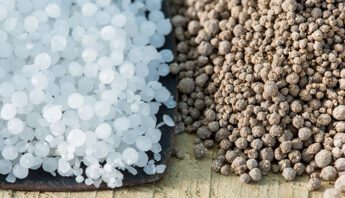If you read environmental news, you’ve probably been hearing a lot about PFAS (per- and polyfluoroalkyl substances). While this uptick in media coverage may make PFAS feel like a new topic, these controversial “forever” chemicals have been around since the 1930’s, and they are used for dozens of purposes. Perhaps one of their most well-known uses, though, is through making products resistant to grease, water, or stains. For an example of this use, paper takeout boxes are often lined with PFAS-containing grease-proofers to keep them from leaking.
Here are a few of the most important things you—as a person—should know about PFAS chemicals and how they may impact your health:
There are thousands of types of PFAS—nearly 15,000 known in a US EPA database—and with thousands of them, it’s safe to say that the majority are not well studied. PFAS are persistent—meaning, once they get released, PFAS stick around and have the potential to affect human health for many years.
How can PFAS harm human health? To name just a few of the health issues PFAS have been linked to: liver damage, immune suppression, higher cholesterol (a major contributor to heart disease), and kidney and testicular cancers.
PFAS chemicals have many, many applications. They have been used in Teflon, coatings in food packaging, dental floss, water repellent coatings in clothing, firefighting foams… and there are PFAS in pesticides, which I’ll get to.
One of the most notorious PFAS is PFOA (perfluorooctanoic acid). PFOA was used in Teflon for nonstick cookware and has caused huge contamination problems in North Carolina and everywhere else, really. PFOA has even co-starred with Mark Ruffalo in a movie about water and land contamination in West Virginia, “Dark Waters.”
A story about one pesticide… out of thousands of PFAS
Of the thousands of PFAS in existence, PFOA and some others have been listed as persistent organic pollutants under the Stockholm Convention, a global ban on chemicals.
Another notorious PFAS is PFOS (perfluorooctane sulfonic acid). PFOS may be best known for its use in firefighting foams, and is listed in the Stockholm Convention under Annex B (Restriction), meaning certain “acceptable uses” still exist. The pesticide sulfluramid can be used to control leaf cutting ants– but when sulfluramid is used, 10% of it degrades into PFOS. The use of sulfluramid is one where “alternative substances may be available but would need to be phased in,” according to the Stockholm Convention’s website.
The chemical alternatives to sulfluramid aren’t good—one of them is chlorpyrifos, which has a whole host of its own well documented issues. Another is an insecticide called fipronil, which also happens to be a widely used fluorinated pesticide. Whether you’d call fipronil a PFAS actually depends on what definition you use. Nonchemical alternatives to sulfluramid mainly include biological control agents (an example of an integrated pest management tactic) which have been used in the US, Taiwan, and South American countries.
Defining PFAS
There are several different definitions out there for PFAS—and in the US, the definition affects which ones get regulated. The Organisation for Economic Co-operation and Development (OECD) published a definition of PFAS in 2021 that is broader than the regulatory definition the US EPA uses. In a multistakeholder process, the OECD updated its PFAS definition to include any molecule that has at least one fully fluorinated carbon, covering over 20,000 molecules.
The US EPA regulatory definition of PFAS covers chemicals that have at least two adjacent fluorinated carbon atoms (CF2 – CFR if you want specifics), a definition that means that EPA is regulating only around 7,000 molecules. That doesn’t mean that the 13,000 other molecules as defined by OECD are any less dangerous or environmentally persistent.
Obviously there are many more out there, including PFAS used as active ingredients (AIs)—especially if you’re using the OECD definition. Apparently EPA is still evaluating PFAS as AIs in pesticides (see question 7), so I guess we’ll see if they identify more, but I’m not feeling too optimistic there. UN experts recently sent letters to the US government, DuPont, and Chemours, stating that “DuPont and Chemours appear to have impermissibly captured the U.S. Environmental Protection Agency and delayed its efforts to properly regulate PFAS chemicals.”
So many PFASets (sorry)
And there’s more to the PFAS and pesticides story — including the plastic in pesticide containers. EPA tested certain pesticides after a researcher found PFOS contamination. They then followed up by testing a number of plastic containers, both fluorinated and non-fluorinated. The fluorinated plastic is more durable when making containers for corrosive chemicals, like pesticides. EPA did not find PFAS in the pesticide formulations it tested, but the plastic testing results were interesting: PFAS leaches from fluorinated plastic containers into pesticides like mosquito control products, which get sprayed in communities across the US.
Recently, EPA ordered the plastic manufacturer to stop producing PFAS, which are created in the production of the company’s fluorinated plastic containers. The company is currently challenging this order.
Pandora’s PFAS
As noted earlier, there are thousands of PFAS chemicals. EPA in 2022 banned just 12 PFAS that they knew to be used as inert ingredients in pesticides.
Unsurprisingly, there’s solid evidence that the two biggest PFAS manufacturers (DuPont and 3M) knew about PFAS toxicity decades before that information became public, and used established industry strategies to delay regulation.
Persistent organic pollutants are a problem that lasts forever. Let’s not use them.
For information on how to limit your exposure to toxics including PFAS, the Program on Reproductive Health and the Environment has an excellent page here.








